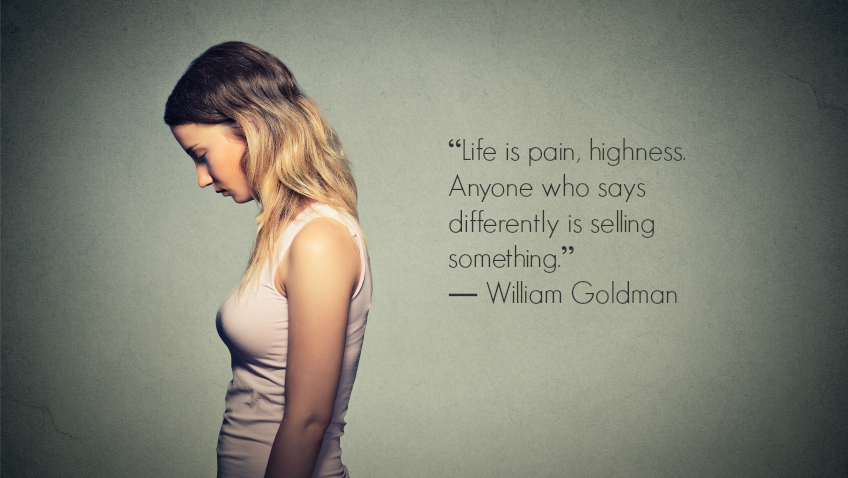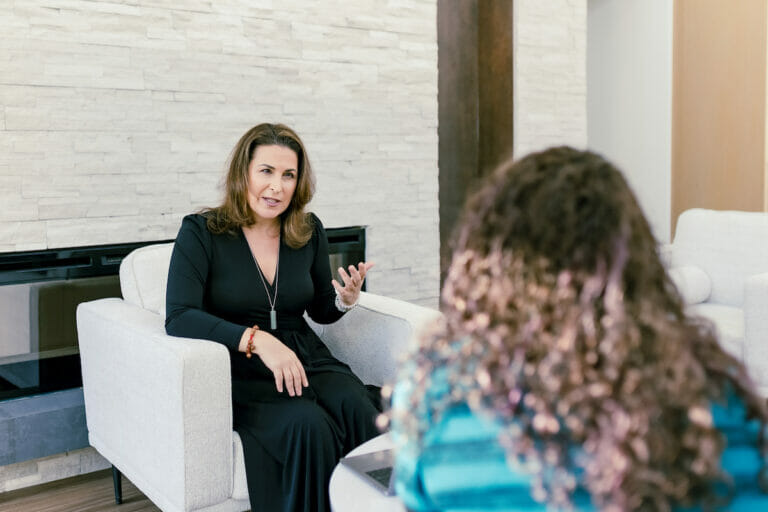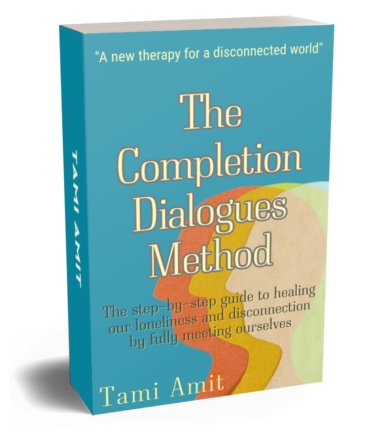When Being Left Out Hurts – healing ourselves through our kids

For many parents, supporting their child through hurt, while still holding on to their OWN hurt from childhood is challenging. The pain of being left out, or socially excluded is one that many of us (including myself) find difficult to maneuver. Quite often the pain that WE feel when witnessing our child be excluded is GREATER than the pain that our child experiences, and can even takes longer to get passed.
We all know that being left out feels terrible. There’s no arguing that. In fact, brain research shows that there is very little difference in the way our brain experiences emotional pain, and the way it experiences physical pain. I guess, that’s why being excluded can sometimes feel like getting punched in the stomach.
There’s a very important reason why being excluded feels so shitty, and that is that humans are social beings. We are dependent on one another not only for thriving, but also for surviving. Studies on chronic social exclusion consistently show devastating effects on our mental health, physical health, emotional self-regulation, addictive behaviour, and the list goes on.
So it makes sense that throughout evolution we developed an intense aversion to being excluded, but why is our pain so much more intense when it is our child that is being excluded?
Because of two things: The first is the little Mirror Neurons in our brain who’s job is to emulate the experience of someone close to us (talk about the perfect tool for empathy!), and the second is the way that trauma is wired in our brain.
As we watch our child being excluded, our brain lights up all the neuron pathways that have to do with OUR OWN cruddy experience of exclusion throughout our life time. Like that time in grade 1 when your best friend made a new best friend, and that time in grade 3 when some kid didn’t invite you to his birthday party, and when last week, you didn’t feel included in the arrangements for that weekend away with the girls/guys.
So not only are we experiencing our child’s pain, but we are also experiencing the accumulation of ALL OUR OWN social exclusion experiences over the years.
So what do we do?
1. First, separate your own feelings from your child’s.
This is vital because we can definitely make things worse by letting our own fears go unchecked. It is also very hard to do when you are in the throws of a reaction, so work on this when you are NOT being triggered. The goal here is to bring more information, and order to this chaotic, and jumbled up shitstorm of emotion. Ask yourself: What experience of being left out, or excluded stands out for me from my own childhood? What do I know NOW about that experience that I didn’t know then? How was THAT experience different than my child’s experience NOW? What resources does my child have that I didn’t? (HINT – the fact that you are reading this article, and choosing to change your reactions is a HUGE resources for your child).
2. Then, gently explore your OWN trauma around social exclusion.
Remember, occasional social exclusion is a natural part of life. It happens to everybody at one point or another. Sometimes though, experiences with social exclusion can get stuck (usually if they were extremely intense and/or chronic). They freeze in our Nervous System as a trauma, meaning they are suspended in a fight or flight mode. They don’t get a chance to evolve and grow wiser alongside the rest of us. That’s why it feels like we’re 5 all of the sudden when triggered. Because the WHOLE EXPERIENCE (image, feelings, thoughts, limiting beliefs, physical sensations…) is stuck at the age of 5, or 12, or 27.
How to figure out what your original ‘exclusion trauma’ is:
Your original trauma is different than the WORST trauma. It may not be very intense but it’s important because it is the trauma that created the ‘exclusion file’ in your mind. Working with this trauma will help you heal.
- When you think about being socially excluded, what is the negative thing you say about yourself? (examples: I am not important, not good enough, not safe, not worthy…).
- As you repeat that negative statement to yourself, what feeling comes up?
- Where do you feel that feeling in your body?
Now, as you are connecting with the statement, feeling and physical sensation, hold them in your mind like a package, and let your mind wonder back in time to the very FIRST TIME you experienced that same feeling, in the same part of the body. When your mind ‘lands’ on an early experience (the earlier the better) you have found your original trauma.
3. Now, comfort and heal.
Once you’ve discovered the original trauma, there are many tools you can use to help you heal. One wonderful tool I use a lot in my practice (and with myself) is connecting with your child self (at the age when this original trauma took place), and giving her what she needs the most. What would you say to her? What does she need THE MOST right now? Is THAT different than what she needed then (when the trauma took place)? What information was she missing? What could have helped her? What strengths, or knowledge do YOU have now, as a grown-up that could be helpful to her? What experiences have you had since then, that have been helpful to you?
HINT- remember, she is a child. Think about your own experiences of comforting children – it helps if you connect first (sit with their experience, instead of trying to change it). Be present, understanding, gentle, and curious.
I remember one time I was working with my child self on some painful stuff, and I told her “It’s okay”. Immediately I felt a surge of anger through my belly (honestly it was as if she punched me in the gut), and I got it – it wasn’t ok! So I changed my approach to: “It wasn’t ok. It was painful, and negligent, and that is NOT ok!”. In that moment she felt heard, and released.
Another one of my favourite techniques to release trauma is Emotional Freedom Technique (EFT). I created a video tutorial that guides you through the technique. Follow this video either by using the memory itself, or the general feeling of being excluded as a starting point.
4. Next, find the opposite experience, and imprint it into your Nervous System.
In many ways, our mind doesn’t know the difference between what is happening in reality, and what we imagine. This works against us when we deal with worry, and anxiety. But it is a function that we can use to our advantage!
What is the EXACT OPPOSITE of the feeling that arises when you imagine being excluded? Write down 5 words that describe it just right (peaceful, calm, connected, supported, confident, sure, wise, perspective…). Now, if you were to use your right hemisphere, and describe these words in images – what would be one image that encapsulates many of these words? (For me, it is the flow of water in a river- not stopping as it nears a river stone, but rather moving around it fluidly and smoothly). Using these powerful words and imagery, spend 5 minutes a day focusing on your go-to image, the words you picked, and most importantly – the FEELINGS that it all creates in your body. With this practice you will feel stronger, and much more resilient to the normal ups and downs of social interaction.
Once you have your image+wording for the opposite experience, make sure to bring them up briefly whenever you feel even a tiny bit triggered. When it comes to our brain, ‘neurons that fire together, wire together’, so help your brain create positive associations to the negative experiences. You can also use this trick when scrolling down Facebook (or Fake Book), or when feeling FOMO (fear of missing out). Simply notice any negative feeling in your body, and ‘pair’ it with your go-to image and words, and don’t forget to really FEEL it. Remember that the stronger the feeling, the deeper the wiring!
5. Use the right kind of breathing to calm down your Nervous System.
None of the tools I have mentioned thus far can be of any use to you if you are stuck in fight or flight mode. When in that mode, your body has only one concern! Survival. It’s too busy pumping adrenaline, and cortisone through your veins, sending blood to your hands (for fighting) and legs (for running), lowering digestion and focusing your mind on the function of NOT dying. It is far from an ideal situation for calming down, and thinking rationally. Also, because ‘what wires together fires together’, the more often you get stuck in this mode, the easier it will be for you to find yourself there again, and again.
Breathing is one of the simplest tools to get yourself out of fight or flight mode, but you need to know how to do it. When you breathe make sure that you fill your throat, chest AND stomach with air. Push your belly out when it feels like there’s not enough room for more air, and then take in some more. Then release it s-l-o-w-l-y. Repeat 5 times.
6. Don’t keep it a secret.
We do this thing sometimes when we feel embarrassed, or ashamed about an experience that we have- we don’t talk about it. But what happens when we don’t talk about it is that it continues to circulate in our brain, looping and looping and making us loopy. Not to mention that it takes a massive amount of energy to hide it, resist it, hate it, and all of the other things we do INSTEAD of accepting it, and allowing it the space to be there. And you know, that fear that you’re feeling right now when thinking about sharing this sensitivity with the world? Make the space for that as well. In fact, there is enough space for ALL of your feelings! Enjoy the relief that comes with all that space! You deserve it.
7. Finally, get help.
If you need more help in clearing these feelings, then do it. Get some help. A counsellor will be able to explore with you further any stuck traumas, and their associated limiting beliefs. It’s okay to have this difficulty right now, in fact it is JUST AS IT NEEDS TO BE. It means that healing is just around the corner. And please know that you deserve it.
I hope this helped. Let me know what you think.
TAGS:
Sharing is Caring!
hello,
I'M TAMI!
I am a Psychotherapist, Clinical Hypnotherapist and EMDR Practitioner. If you want to create positive change in your life then you have come to the right place.
Now Trending:
Categories

Let's Work Together!
Other Posts of Interest
Get Your Hands
On My New Book
The Completion Dialogues Method: The new therapy for healing our loneliness and disconnection by repairing our most fundamental relationship – with our self! (to be released in 2022). See Full Details Here >













